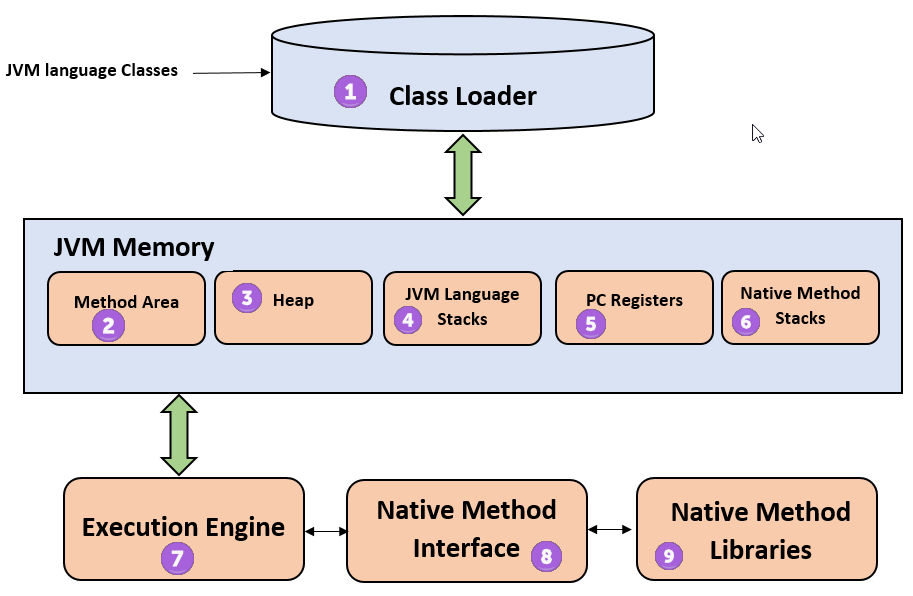Java Virtual Machine (JVM)
The Java Virtual Machine (JVM) architecture is designed to provide a runtime environment for Java applications. Here’s a breakdown of its main components:

Class Loader
This subsystem loads class files into the JVM. It performs three main functions:
-
Loading: Reads the .class file.
-
Linking: Combines the different classes and interfaces.
-
Initialization: Initializes static variables and executes static blocks.
Runtime Data Areas
These are the memory areas used during the execution of a program:
-
Method Area: Stores class structures like metadata, constant runtime pool, and the code for methods.
-
Heap: The runtime data area from which memory for all class instances and arrays is allocated.
-
Stack: Stores frames, which hold local variables and partial results, and plays a part in method invocation and return.
-
PC Register: Each thread has its own PC (Program Counter) register, which stores the address of the currently executing JVM instruction.
-
Native Method Stack: Contains all the native methods used in the application.
Execution Engine
This component is responsible for executing the bytecode:
-
Interpreter: Reads and executes the bytecode instructions one by one.
-
Just-In-Time (JIT) Compiler: Improves performance by compiling bytecode into native machine code at runtime.
-
Garbage Collector: Automatically manages memory by reclaiming memory used by objects that are no longer reachable.
Native Method Interface
This framework allows the JVM to call and be called by native applications (programs specific to the hardware and operating system).
Native Method Libraries
These are the libraries (written in other languages like C or C++) required for the execution of native methods.
In summary, the JVM architecture ensures that Java applications can run on any device or operating system that has a compatible JVM, embodying the “Write Once, Run Anywhere” principle.
References: